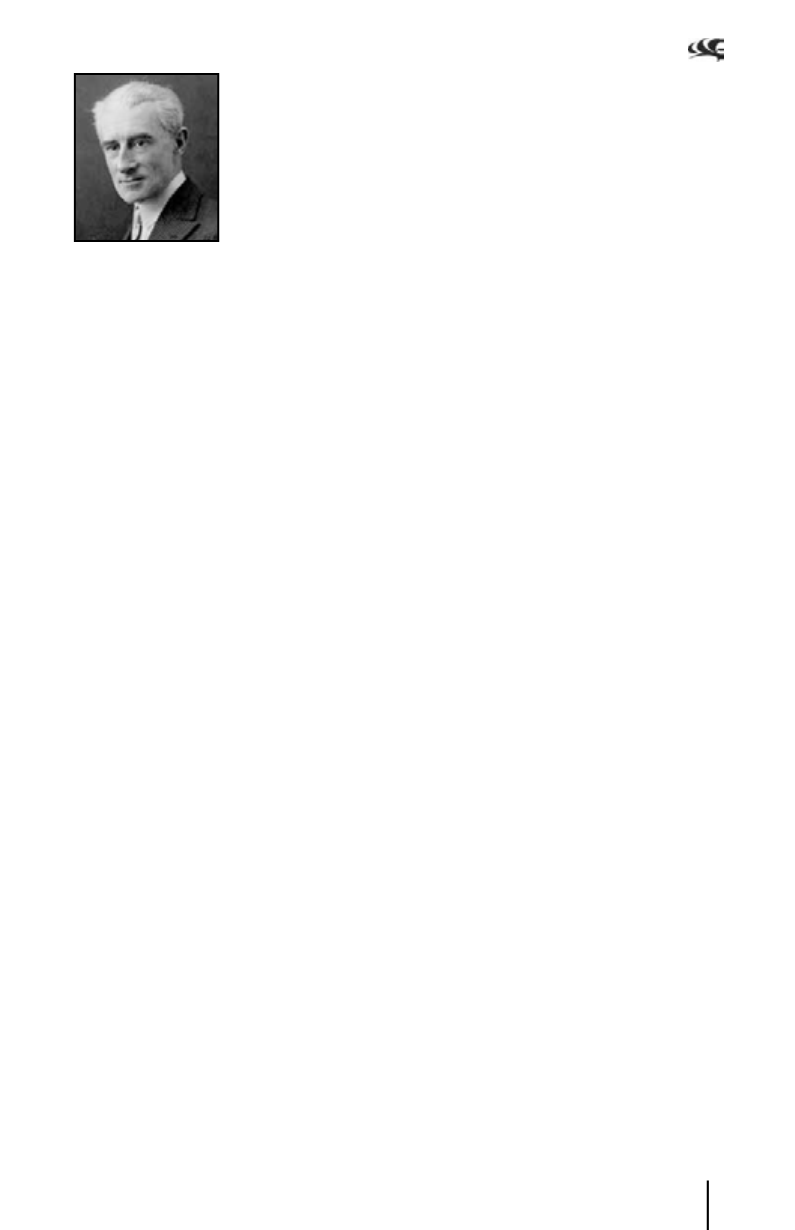
2013
Program Notes, Book 1 A29
La Valse
,
Poème choréographique
(1919-1920)
Maurice Ravel (1875-1937)
La Valse is scored for piccolo, two flutes, two oboes, English
horn, two clarinets, bass clarinet, two bassoons, contrabassoon,
four horns, three trumpets, three trombones, tuba, timpani,
percussion, two harps and strings. Performance time is twelve
minutes. The Grant Park Orchestra first performed La Valse on
July 24, 1954, with Alfredo Antonini conducting.
Ravel first considered composing a musical homage to Johann Strauss as early as
1906.
The idea forced itself upon him again a decade later, but during the years of the
First World War, he could not bring himself to work on a score which he had tentatively
titled “Wien” (“Vienna”). As the war had sapped a great deal of his energy, it took
a proposal from the great ballet impresario Sergei Diaghilev in 1918 to convince
Ravel to bring the project to fruition. (Diaghilev hoped to pair Ravel’s new work with
Stravinsky’s Pulcinella, but upon its completion, the impresario was dissatisfied with La
Valse — “a masterpiece, but it’s not a ballet,” he said — which then had to wait until
1929
for its stage premiere under Ida Rubinstein.)
By January 1919, when Ravel was immersed in the composition of his tribute to
Vienna, he said that he felt he was “waltzing frantically.” He saw La Valse both as “a
kind of apotheosis of the Viennese waltz” and as a “fantastic and fatefully inescapable
whirlpool.” The “inescapable whirlpool” was the First World War toward which Vienna
marched in three-quarter time, salving its social and political conscience with the
luscious strains of Johann Strauss. There is more than a touch of the surreal in La
Valse. Familiar and real things are placed against a background strange and a little
threatening in its disorienting effect. This artifice paralleled the situation that Ravel
saw as characteristic of late-19th-century Vienna in particular and Europe in general.
A surrealistic haze shrouds the opening of La Valse, a vague introduction from
which fragments of themes gradually emerge. In the composer’s words, “At first the
scene is dimmed by a kind of swirling mist, through which one discerns, vaguely and
intermittently, the waltzing couples. Little by little the vapors disappear, revealing an
immense ballroom filled with dancers. An Imperial court ball about 1855.” In the
form typical of the Viennese waltz, several continuous sections follow, each based on
a different melody. At the half-way point of the score, however, the murmurs of the
introduction return, and the melodies heard previously in clear and complete versions
are now fragmented, played against each other, unable to regain the rhythmic flow of
their initial appearances. Persistent rustlings in the low strings and woodwinds, flutter-
tongue wails from the flutes, snarling muted brass, abrupt and violent crescendos
challenge the old waltz melodies. The musical panacea of 1855 cannot smother the
reality of 1915, however, and the music becomes consumed by the harsh thrust of the
roaring triple meter transformed from a seductive dance into a demonic juggernaut.
The dissonances grind, the rhythms become brutal, the orchestral colors blaze as
the world of order is sucked toward the awaiting cataclysm in what Ravel called “a
fantastic and fatal sort of dervish’s dance.” At the almost unbearable peak of tension,
the dance is torn apart by a five-note figure spread through the entire orchestra, a
figure so alien to the triple meter that it destroys the waltz and brings this brilliant,
forceful and disturbing work to a shattering close.
©2013 Dr. Richard E. Rodda
Friday, June 21 and Saturday, June 22, 2013


